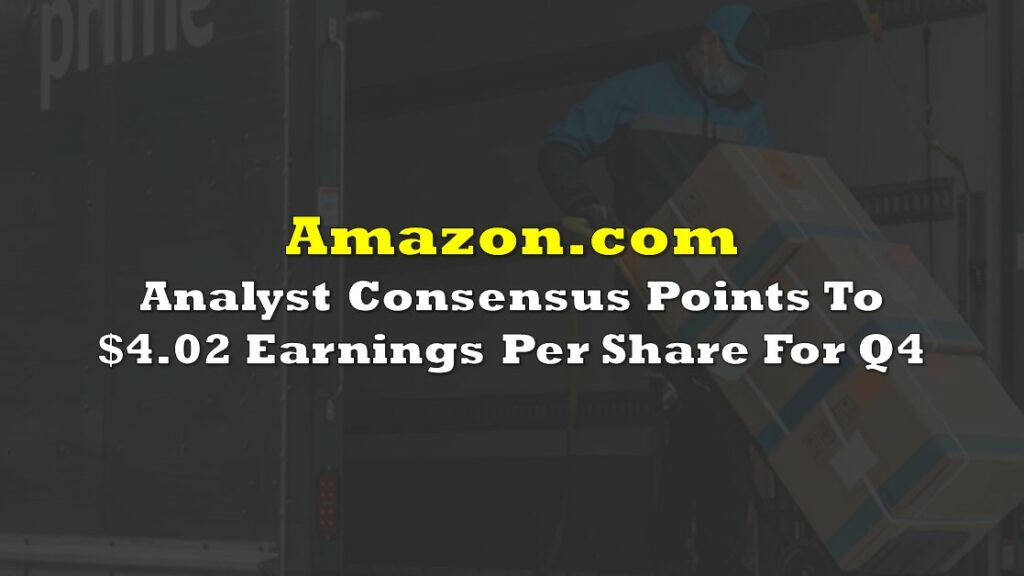Amazon’s (NASDAQ: AMZN) ambitious satellite internet initiative, Project Kuiper, is now projected to cost between $16.5 billion and $20 billion, according to a new analysis by Quilty Space, a Florida-based space industry consultancy. This marks a significant increase from Amazon’s earlier estimate of $10 billion, which was shared when the company first revealed the project four years ago.
At its core, Project Kuiper aims to launch 3,232 satellites into low Earth orbit to create a global broadband network. Once operational, the network would provide high-speed internet services to underserved or unserved areas, supporting tens of millions of users globally.
The project also holds strategic value for Amazon’s other ventures, including Amazon Web Services (AWS), which powers significant portions of the internet, and potentially future business expansions. The company holds a Federal Communications Commission (FCC) license that requires at least half of the satellites to be deployed by mid-2026.
While Amazon’s vision is ambitious, it lags far behind SpaceX’s Starlink, which already has more than 6,000 satellites in orbit. But Quilty Space sees potential for Amazon to carve out a place in the market, despite Starlink’s head start.
“If Amazon can reach 100 million [subscriptions] at an average monthly ARPU [average revenue per user] of $30, Kuiper would generate $36B in annual revenues, rivaling Amazon’s current subscription revenues,” Quilty’s report highlights. For comparison, Starlink is projected to exit 2024 with 3.9 million subscribers, bringing in $6.6 billion in revenues.
Rising costs
The rapidly escalating costs of Project Kuiper have raised eyebrows, especially given the recent history of Amazon’s other costly ventures like the Alexa voice assistant and Halo fitness trackers, which have struggled to achieve profitability. Quilty Space’s report explicitly references these failures, warning that “if Kuiper’s expenses spiral and milestones are missed, it risks becoming another costly misstep.”
Launch costs alone are projected to reach at least $10 billion. The primary launch vehicles for Kuiper include United Launch Alliance’s (ULA) Vulcan Centaur rocket—of which only one space launch has been completed so far—Blue Origin’s New Glenn rocket, still under development, and a mix of other launch platforms like SpaceX’s Falcon 9, ULA’s Atlas V, and Arianespace’s Ariane 6, which had its first launch in mid-2024.
Quilty’s analysis underscores a key challenge: “Amazon’s alarmingly high reliance on all-new launch vehicles poses the biggest impediment to getting Kuiper off the ground.”
To meet the FCC’s 2026 deadline, Amazon and its partners must ramp up launch rates to levels never seen in private space operations. Given this challenge, Quilty predicts Amazon will likely need a waiver from the FCC to extend the timeline.
Amazon has remained tight-lipped about many of the technical details for Kuiper’s satellites, but Quilty Space provides some estimates. Each satellite is expected to weigh about 600 kilograms (1,320 pounds) and feature an 8-meter (26-foot) solar array. Production costs are estimated to be between $1.5 million and $2 million per satellite. The satellites are being manufactured at Amazon facilities in Kirkland and Redmond, Washington, with more than 2,000 employees working on the project.
One area of concern highlighted in the report is Amazon’s “shaky” record with consumer devices. Quilty suggests that without solid execution, Project Kuiper could join Amazon’s other ventures that struggled to meet financial expectations, such as its Alexa voice assistant and the Halo fitness trackers.
Despite these challenges, Quilty’s analysis points to several strengths that could make Project Kuiper a success, including Amazon’s formidable expertise in mass production through its consumer electronics division. Additionally, the company’s AWS platform powers a third of the world’s internet infrastructure, providing Kuiper with a potential ready-made customer base, unlike Starlink, which has had to build its customer network from scratch.
“Kuiper’s not-so-secret strength stems from Amazon’s Devices business, with ample experience in mass-producing consumer electronics, and AWS, which powers about a third of the internet’s infrastructure,” Quilty noted.
Expanding market
One intriguing possibility highlighted in the report is Kuiper’s potential to serve not just as an internet provider but also as an alternative to Global Positioning Systems (GPS). Quilty suggests that Kuiper could be adapted to offer positioning, navigation, and timing services—known as PNT—potentially increasing its utility for military and commercial applications.
“Amazon’s early consideration of PNT for Kuiper increases the likelihood of its success, either as an upgrade to Kuiper Gen-1 or as a part of the larger Kuiper Gen-2,” the report said. Such capabilities would align Kuiper with national defense and intelligence needs, offering Amazon a lucrative foothold in government contracts.
Although Amazon is targeting a global user base, Quilty expects the early adopters of Kuiper’s services to come primarily from the government and mobility sectors. Amazon has already established partnerships with major wireless telecom providers, including Verizon, Vodafone, and NTT, positioning Kuiper to offer connectivity services for planes, ships, and other mobile platforms.
Given the enormity of the satellite broadband market and the slow pace of broadband expansion in rural and underserved areas, there is significant room for multiple players to thrive, even with Starlink’s current dominance.
“The reality is, barring a miracle, Amazon will need a waiver from the FCC, but we don’t see this as a major roadblock,” the report concludes.
Amazon last traded at $184.52 on the NASDAQ.
Information for this briefing was found via GeekWire and the companies mentioned. The author has no securities or affiliations related to the organizations discussed. Not a recommendation to buy or sell. Always do additional research and consult a professional before purchasing a security. The author holds no licenses.









